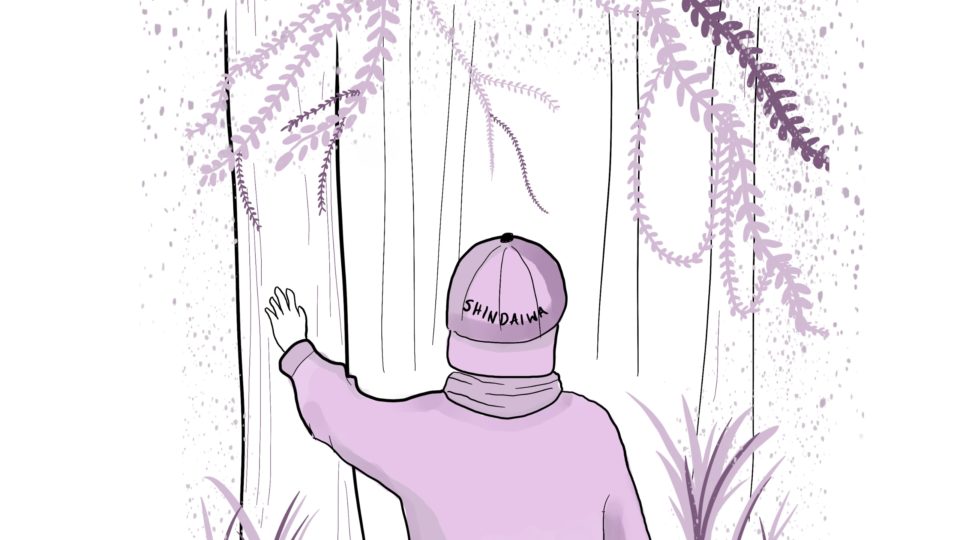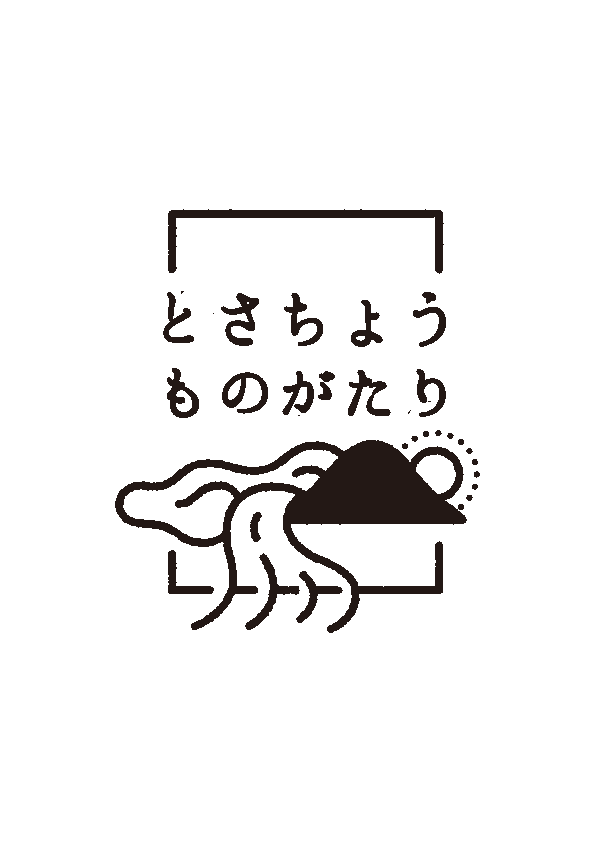
I went to meet A san (not his real name*) on his land in the heart of the mountains of Tosa-cho, where he grows the plant Shikimi, common in Shinto ceremonies and used to decorate altars. He keeps ducks who help him to take care of his rice by eating weeds and harmful insects, and by fertilising the rice crop. He knows the paths and trees in his forest as well as a city person would know the streets and buildings of their neighbourhood. School children often come here to learn about nature and see how we can work with it, such as by making beautiful things out of wood, or healing ourselves with plant remedies. He told us that the plants that are able to grow and thrive here in the mountains, growing up through other vegetation, have the strength to survive and therefore when you eat them you too gain some of that vitality. Along with my research assistant Lise Sasaki and two friends, we spent several hours walking and talking together about happiness and the things in life that give a sense of purpose, in Japanese termed ikigai. While this is quite an abstract term, A san was able to explain his ideas through vivid analogies to the landscape that surrounds him.
“What is happiness? Human being’s happiness… It’s health – to keep healthy. But after that, its whether or not you find the job you want to devote your life to. I have lived through many jobs and have picked up skills throughout. Now I use those skills to do what I do, my passion. My life story, my life history is written in the mountains, and is remembered by the mountains. Working in an office, once you retire someone else will take on your job. But in this rural area the trees I have planted will grow and remain here, and the trees will be cut down and I will plant them again. It will be a cycle. Not only that cycle, but here – (shows us the rings of a cut tree) you can see how much it has grown, how much it has lived. The trees, even if they are chopped, they will live on as someone else’s house or in another form. It reincarnates as several things. Trees live once in the mountains, giving us oxygen and giving to us our life. And it lives that way. But in its second life, it is transformed into our homes, giving us comfort. We can’t see the oxygen, but it produces it – let’s say it was living in the mountains for 50 years and then it was chopped down and lived as a house for 50 years. Then it has lived for 100 years.”
A san explained that trees, like humans, are naturally wild, but that with the right kind of nurture they can find their way in the world. He said that when we are becoming an adult we have to choose our path in life and our role in society – trees are the same. For many people I have spoken to the idea of ikigai is linked to the satisfaction you gain by fulfilling your role in society, especially when you see your positive impact on others. Whether through making delicious bean paste sweets and sharing them with people, or in taking workshops to become a better teacher for your students, people agreed that one element of ikigai is about trying your best in serving others.
Everyone has a different definition of ikigai. For some people it refers to dreams and ambitions, such as pursuing a career as an artist, for others it is about doing daily activities which align with one’s interests such as learning English, or for others it is more about the thing in life that you could not live without, such as your children. For some people it is about enjoyment of life, for others it is about the fulfilment of obligations, and some people are in between – a sense of ikigai can come in both difficult and joyous moments and it is more about an underlying feeling of immersion in life.
The English translation of “purpose in life”, it seems, is completely inadequate for understanding the broad range of meanings that ikigai can have in Japan. In England we often talk about life dreams, or working towards goals that we want to achieve. But it seems that people here think about life purpose in a more subtle way, through trying your best day-to-day and being fully present in whatever you are doing. A san explained that we must live in the now, rather than waiting for happiness in the future. I think this is an important lesson for us all, especially for people living hectic city lives far removed from the cycles and rhythms of nature. We can often get caught up in our to-do lists and anxieties rather than being fully aligned with our passions and the flow of life.
“Human beings are always worried, human being all have anxiety. If your passion wins over, you’re okay. If anxiety takes you over, you can’t take a step. You think life and death are far apart? They’re next to each other. You can die anytime you know? It’s up to you whether you stay anxious or to live the fullest, with passion.”
Thank you to A san for sharing your time, wisdom, and inspiring passion for nature with us.
*A san is a pseudonym because this man preferred to remain anonymous.
Japanese version from here. | 日本語はこちら



